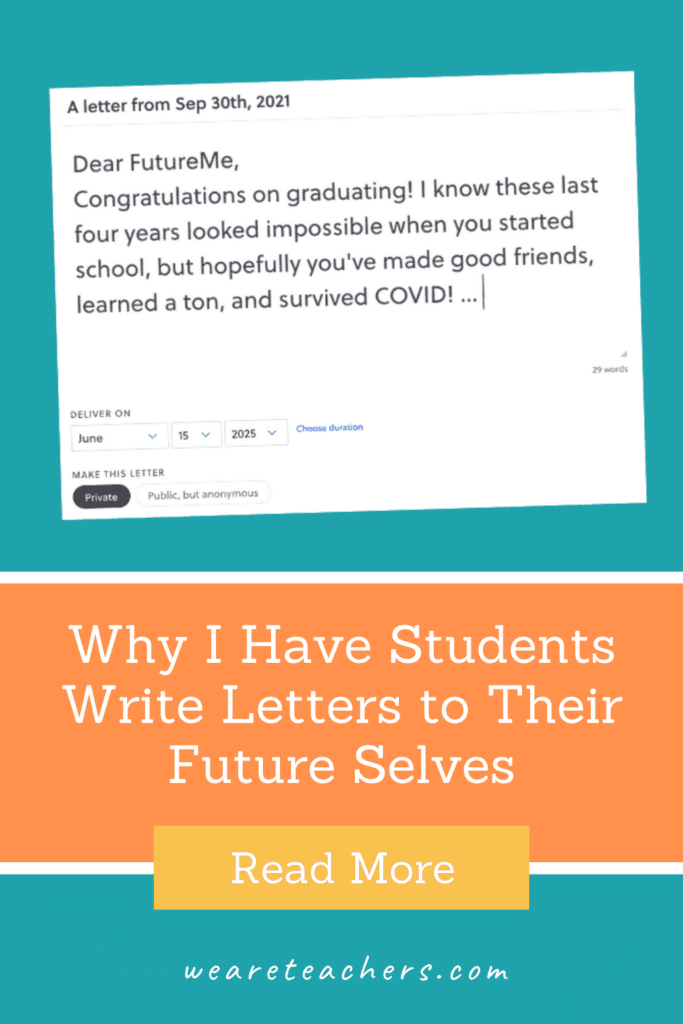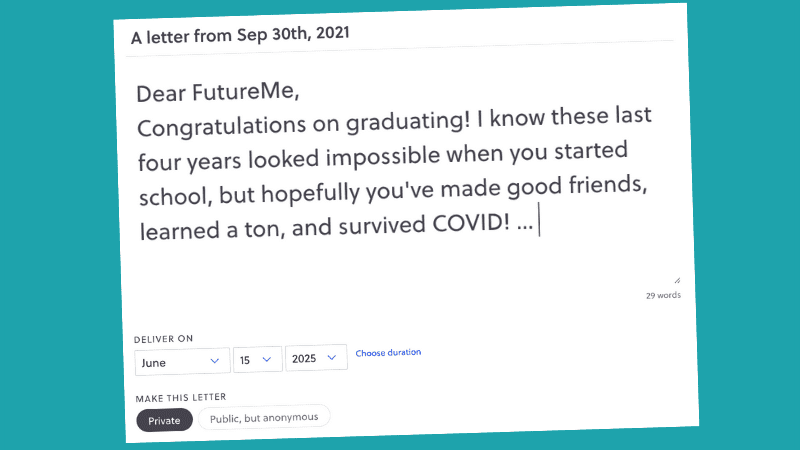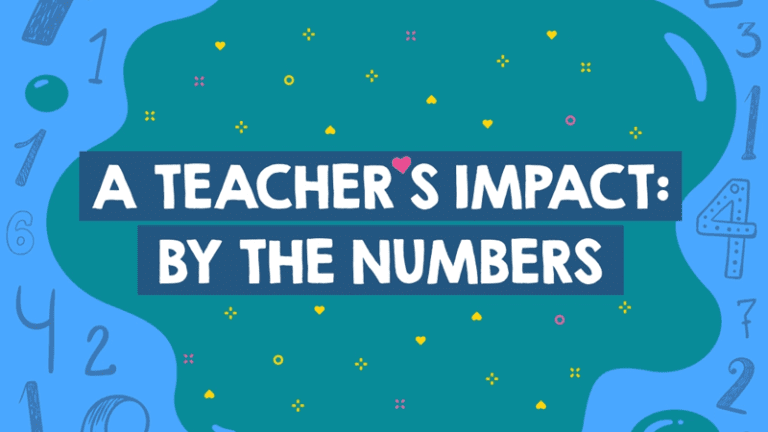Community building is essential to any classroom’s success. And, if you’re going to accomplish anything in an upper grade classroom, you really have to work on student engagement, especially now. This means that teachers have to dig into two toolboxes at all times: the “build community while being self-reflective” activities and the one labeled “OMG can y’all believe how exciting this activity is?!”
Over the years, I’ve assigned writing assignments to help build community. They’ve changed to avoid duplication of other classes and prompts, and this year, I decided to have students write a letter to their future self. That’s when I found FutureMe in the classroom, which fit in both of those toolboxes above!
The idea is simple: you create a single page for students to type a letter to their future self, which the site then delivers electronically on the future date that you or the students set. Students only have to work in one text field, enter their email address, choose a delivery date, and send. It’s that easy.
Save time on your lesson planning
My reality as an educator, like many of yours, is difficult to describe right now. My planning time is booked from now till February, by which time I should be caught up on September’s grading! That was a solid plus for FutureMe. Once I started thinking about my prompt and how I wanted the students to interact with the site, it only took about 15 minutes to get everything ready.
Customize as little or as much as you’d like
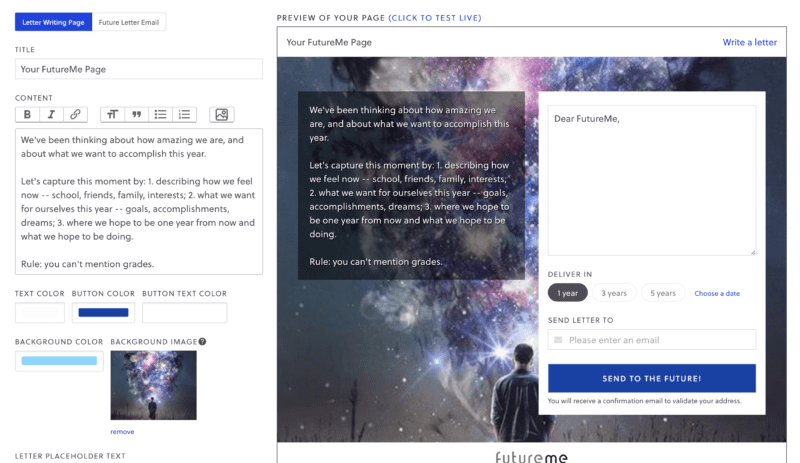
The live preview captures what you see as you edit.
The site is intuitive. As you customize the page that students will see, your updates appear live in a frame on the same tab. This is especially helpful if you want to modify the colors, which I did to match our school’s colors. It’s also easy to adjust the colors of the text and the “send” button. When you’re done, or if you just want to see the student page, just hit the Preview link.
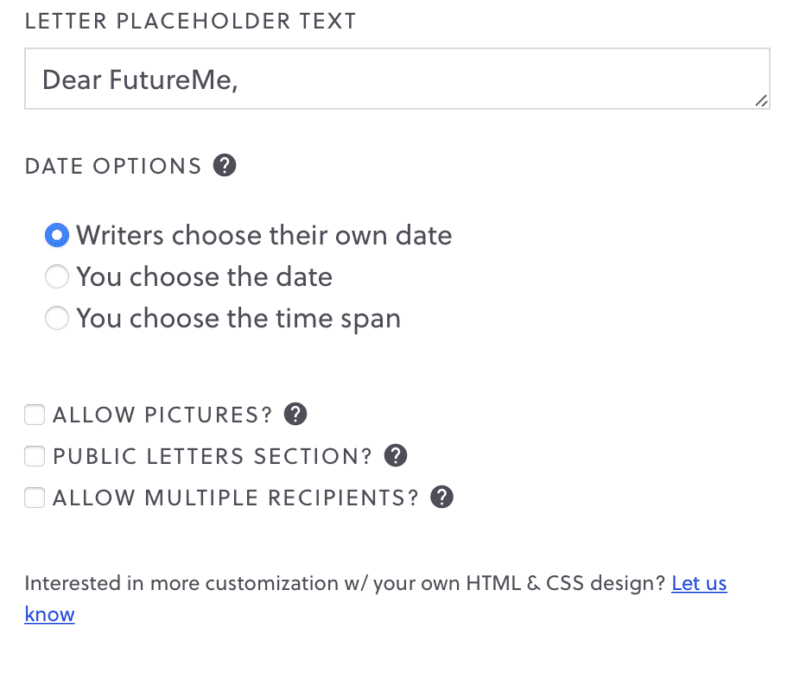
I set our work to private—only the students will see their emails (a few students sent them to their parents’ email addresses, too). This is a personal choice and it works for our classroom community, but you can adjust those settings with a click. You’re also able to choose between having the students choose their own date or setting it for them. For this assignment, I let the kids choose their date. I plan on going back to the site in a few weeks for a more formal assignment. For that, I’ll set the date for them. You can also choose to make letters available publicly by selecting which ones might be appropriate and interesting to share.
Discover effortless student engagement
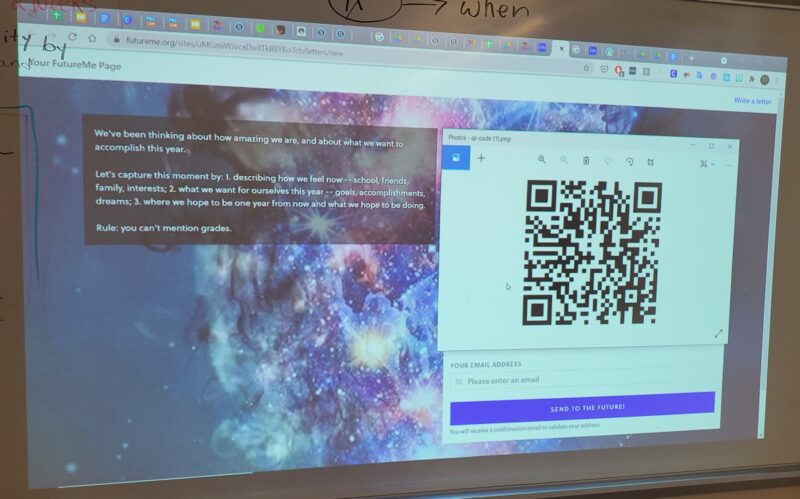
I made a QR code for the link for the students to scan using their devices, and the site loaded right up. Once the students were on the site, they knew exactly what to do. They played around with changing the delivery date and talked with each other about the choice they made. Questions included, “can I curse?” “can I send this to my mom, too?” and “can we do this next week, too?”
An important aspect of any Letter to My Future Self assignment is this magical idea that we have acted outside of time—that a future version of ourselves can interact with a past version of ourselves, connecting old to young, present to past, and spurring nostalgic feelings. When the kids finished, they pressed “Send to the Future,” and it was gone, like magic.
Think beyond the classroom prompt
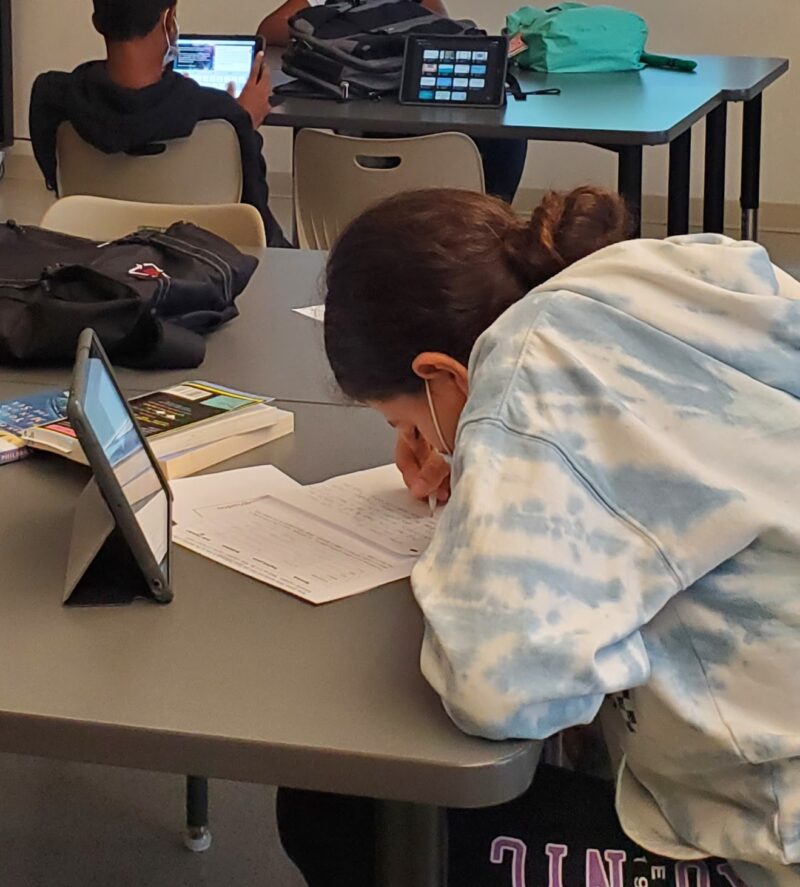
It’s great to have paper handy for those first drafts
Another plus for FutureMe, for sure—there was no teacher stuffing a letter into a yellow envelope with a promise to send on to a high school teacher or sealed and stamped envelopes stashed in a drawer to wait for a future postal worker. FutureMe maximizes student agency for a common activity, turning it from an old, wooden desk and paper envelope kind of thing into the familiar space of tech and social media actions. If you choose to make some of the letters public, you can expand the reach of the assignment even further.
Consider a variety of prompts to get students started. In each one, encourage students to think of themselves not just as students, but as human beings: sisters, brothers, friends, sons or daughters, creatives, athletes, leaders, etc.
- What is one thing you’d like to accomplish this year?
- Describe how you feel right now and what you enjoy doing.
- Where do you see yourself as a student in X length of time?
- What are you most proud of in your life so far? What do you want to be proud of in one year?
- Describe something you are struggling with right now, and describe what it might look like to have overcome it.
- Write a letter to give your future self some encouragement and love!
- How have you changed over the past few years, and how do you hope to change over the next few?
In future assignments, I will change the setting so I can read and grade or give feedback on them. The flexibility is important to me, and FutureMe provides exactly the kinds of focused choices that have a meaningful impact on the student’s experience. My students are looking forward to the next assignment, and so am I!
Getting started is easy, and it’s FREE with code “WEARETEACHERS.” Use your K-12 school email to enroll for one year for up to 200 students.
